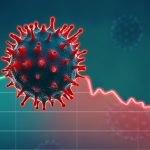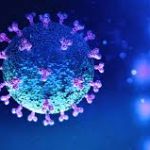AIDS Facts
Some statistics on the AIDS crisis, as of November 1998:
-In 1998 there was a 10 per cent increase in the number of people with HIV or AIDS.
-There are now 33.4 million people with the infection.
-Half of the 5.8 million new infections occurred in young people aged between 15 and 24.
-About 2.5 million people died from AIDS in 1998.
-Of these deaths, 510,000 were children.
(The above information taken from the UN and the World Health Organisation, as reported in The Age, 25 November 1998)
-More than 30 million people around the world are infected with HIV/AIDS.
-Nine out of ten HIV positive people live in the developing world.
-In 1997 there were 5.8 million new HIV infections.
-About 16,000 people are infected daily.
-One in every 100 sexually active adults aged 15 to 49 worldwide has HIV.
-Of the above, only one in ten knows that they are HIV positive.
-If present trends continue, 40 million people will be infected by the year 2000.
-HIV infects 1600 children every day.
-One million children under 15 are living with HIV.
-Eighty per cent of child AIDS sufferers never see their fifth birthday.
-Sub-Saharan Africa has 20.8 million cases of HIV/AIDS infection.
-Asia has 6.5 million cases.
-Latin America has 1.3 million cases.
-North America has 860,000 cases
-Europe has about 600,00 cases.
-The Caribbean has 310,000 cases.
-North Africa and the Middle East has 210,000 cases.
-Australia and New Zealand have 12,000 cases.
-Cumulative world-wide HIV/AIDS deaths are 11.7 million.
-In 1997 2.3 million people died because of HIV/AIDS. 460,000 of these were children.
-An estimated 8.2 million children under the age of 15 have been orphaned because of AIDS.
(The above information taken from UNAIDS, as reported in The Age, 28 November 1997, The Age, 3 December 1997, The Herald Sun, 30 November 1997, The Weekend Australian, 29-30 November 1997, and The Herald Sun, 28 November 1997.)
-In Australia, by the end of 1997, there were 20,954 cases of HIV diagnosed.
-In Australia, by the end of 1997, 5,522 people had died because of AIDS.
(The above information taken from Communicable Diseases Intelligence, Vol. 22, No 4, 16 April 1998, Department of Health & Family Services, Canberra)
-There were 852 diagnoses of HIV infection in 1996. 92% of these were male.
-Of those infected with HIV, 84.3% are male homosexual or bisexual; 7.1% are injecting drug users.
(The above information taken from Australian HIV Surveillance Report and Australian HIV Surveillance Update. Sydney: National Centre in HIV Epidemiology and Clinical Research, April 1997)
-The first cases of AIDS in Australia were reported in 1982-83.
-It is estimated that the annual incidence of new HIV infection peaked at about 3000 in 1984, and then declined to around 500 in 1990.
-Median ages at HIV and AIDS diagnoses have been in the low and high 30s respectively.
-In 1992 AIDS had become the third-greatest cause of death among people aged 25-44 years; among New South Wales men in this age group it had become the second greatest cause.
-By the end of 1994, 90 per cent of cumulative AIDS cases among adults whose exposure category was reported had occurred in men with a history of homosexual contact.
(The above facts taken from Commonwealth Department of Health and Family Services, Partnerships in Practice: National HIV/AIDS Strategy 1996-97 to 1998-99. December 1996)
-In the 1997/98 financial year, HIV and AIDS treatments cost taxpayers $59 million, more than 2 per cent of the total cost of the Pharmaceutical Benefits Scheme. (The Age, 23 November, 1998)
-In 1995/1996, $104 million dollars was allocated to HIV/AIDS. $52 million of this went to AIDS Medicare Funding. (Commonwealth Budget Statements)
-In 1993, 0.5% of all causes of death were attributable to AIDS. 26% was due to heart disease. 26% was due to cancer. 10% due to stroke, and so on. (The Australian, 24 September 1993)
-In Australia, as in most Western nations, male homosexuals are the main group to acquire HIV/AIDS. Male homosexuals spread HIV efficiently because: 1) they are more promiscuous than other segments of the population; 2) homosexual practices, especially receptive anal intercourse, maximise spread of the virus, and 3) homosexual men contract many other sexually transmitted diseases, such as herpes and syphilis, which provide openings into the body for the virus. (The AIDS Epidemic by Glenn Wood and John Dietrich. Portland, Oregon: Multnomah Press, 1990, pp. 122, 123)
-A survey of homosexual men in Sydney found that 97 per cent were aware of AIDS, but nearly half said they had not changed their behaviour as a result. (Durex HIV/AIDS Survey, cited in The Age, 29 November 1997, p.10)
AIDS stands for Acquired Immunodeficiency Syndrome
HIV stands for Human Immunodeficiency Virus
GRID stands for Gay-Related Immune Disorder (the original name for AIDS)
[798 words]



















